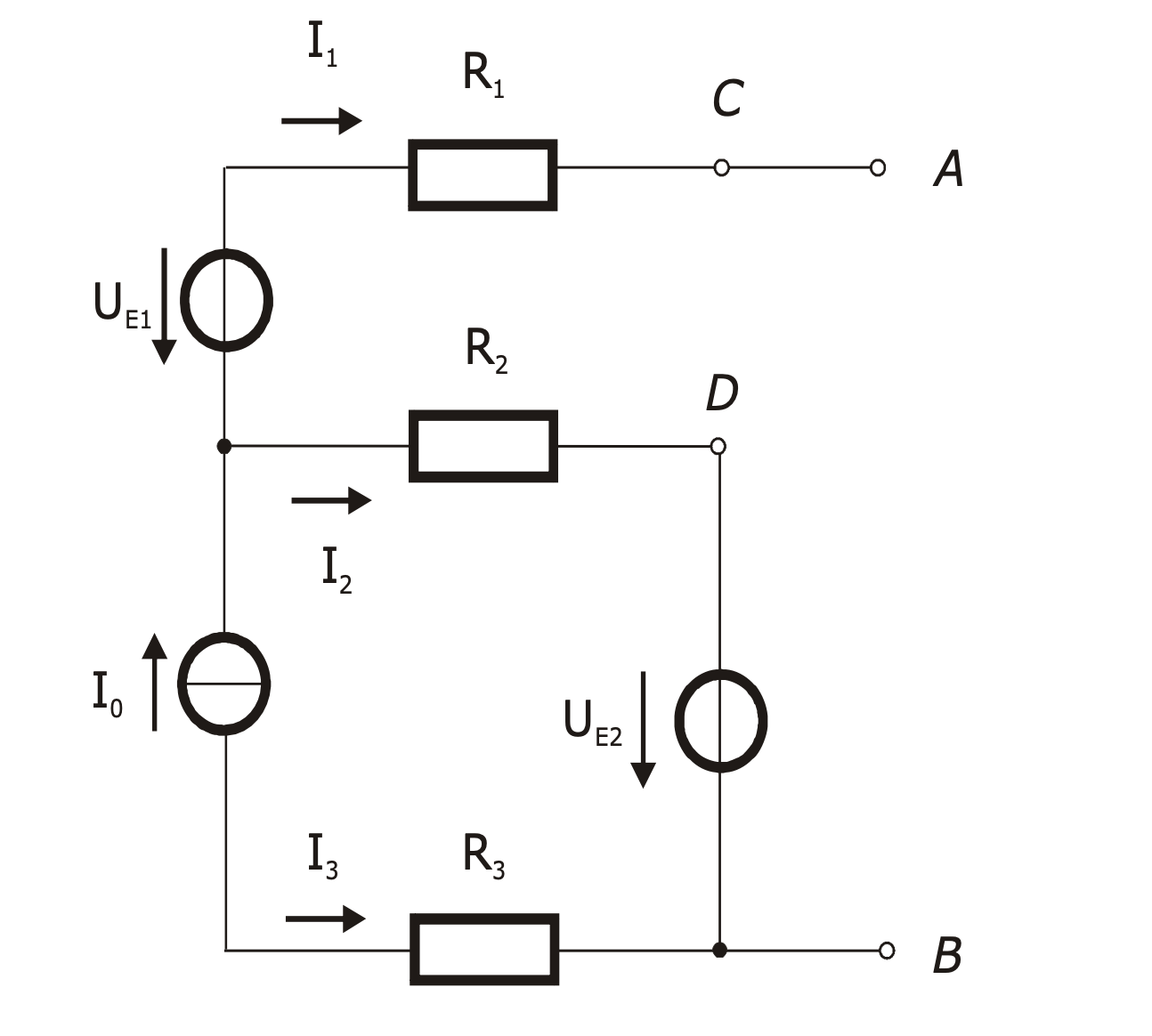Calculate internal resistance?
Hello,
I have to calculate the internal resistance of a circuit with respect to terminals A and B.
I know that the voltage sources go into short circuit mode and the current sources go into open circuit mode. But if I now set the current source Io to open circuit mode, what happens to R3? Is it correct that this should then be ignored because it also disappears? So Ri = R1 + R2?
Furthermore: If I then want to calculate the short-circuit current between terminals A and B, is it appropriate to use an equivalent voltage source or do I have to do it normally using the superposition principle?

If all sources are active and you want to have the terminal resistor AB, you have R1 + (R2 || R3) here. (with neglect of the source internal resistances).
For the current through AB at short circuit of AB, you need the current that only comes through I0 and the currents that originate through Ue1 and Ue2.
Case 1: Power source active, voltage sources short circuited
Case 2: power source in idle, voltage sources active
(About R3 no current can flow)
Then:
Ri = R1+R2
R3 is irrelevant as it is in series with the power source.
Why do you want to calculate the short-circuit current (last paragraph)? You're looking for the internal resistance of the current circuit.
Set a test voltage between A and B and calculate the current flowing into the circuit—with two partial calculations: (a) short circuit voltage sources and (b) open current sources.
Thanks for the answer
The last paragraph is a subsequent subtask.
So the internal resistance is simply R1 + R2 is that right? I already know that the superposition principle is possible in the second task. The question is only if I can calculate this also via the Ersavtz voltage source, ie with internal resistance and idling voltage between A and B.
Why (R1+R2)? It is necessary for TWO divisions! You've done short-circuiting the voltage sources and idling the power source together?